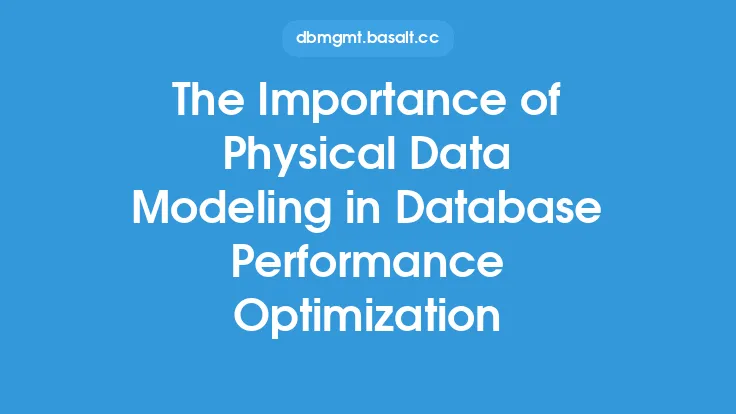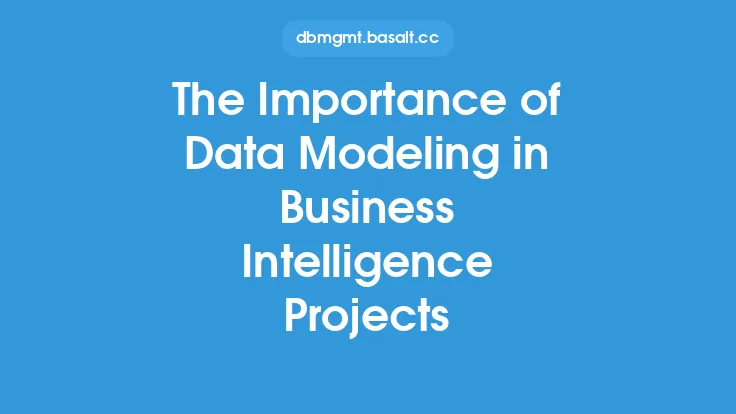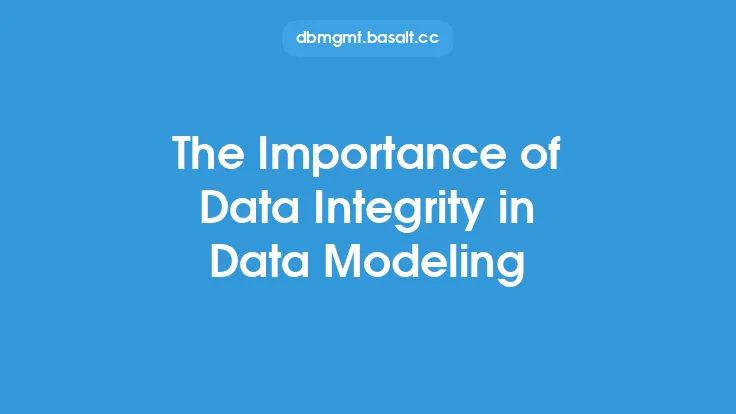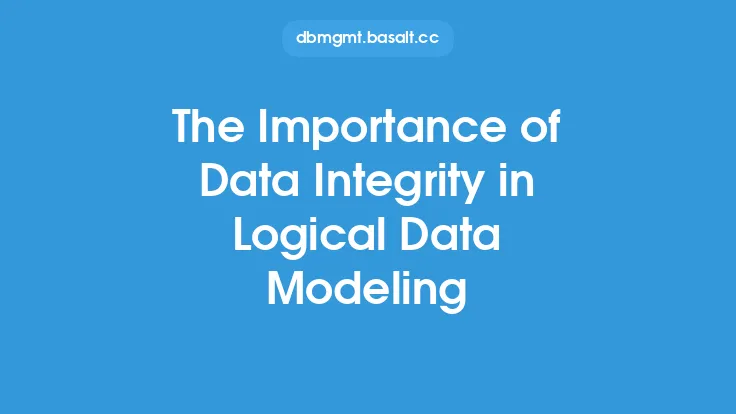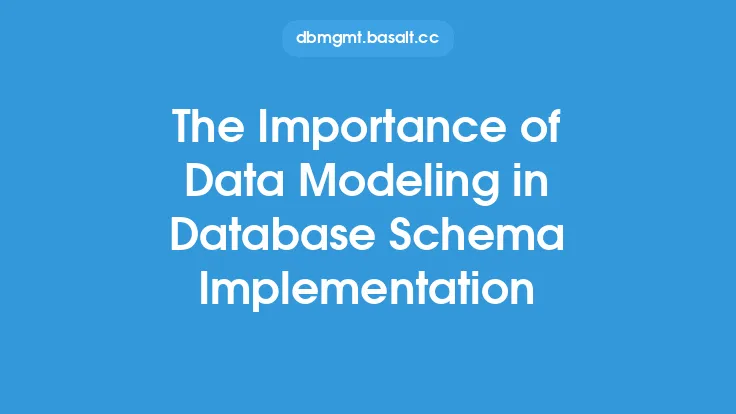Data modeling is a crucial step in the development of a data warehouse, as it enables organizations to create a robust, scalable, and maintainable repository of integrated data. A well-designed data model is essential for ensuring that the data warehouse meets the needs of its users, provides accurate and consistent data, and supports business decision-making. In this article, we will explore the importance of data modeling in data warehouse development, its benefits, and the key considerations that organizations should keep in mind when creating a data model.
Introduction to Data Modeling
Data modeling is the process of creating a conceptual representation of the data that will be stored in the data warehouse. It involves identifying the key entities, attributes, and relationships that are relevant to the business, and organizing them into a logical and consistent structure. A data model is a blueprint or a map of the data, which provides a clear understanding of how the data is organized, related, and constrained. Data modeling is a critical step in the data warehouse development process, as it lays the foundation for the design of the database, the extraction, transformation, and loading (ETL) processes, and the business intelligence (BI) applications that will be used to analyze the data.
Benefits of Data Modeling
Data modeling provides several benefits to organizations, including improved data quality, increased data consistency, and enhanced data sharing and integration. A well-designed data model ensures that the data is accurate, complete, and consistent, which is critical for making informed business decisions. Data modeling also enables organizations to identify and resolve data inconsistencies and errors, which can have a significant impact on the quality of the data and the accuracy of the analysis. Additionally, data modeling facilitates data sharing and integration, as it provides a common understanding of the data and its relationships, which enables different departments and teams to work together more effectively.
Key Considerations for Data Modeling
When creating a data model, there are several key considerations that organizations should keep in mind. First, the data model should be aligned with the business requirements and goals, and should reflect the key entities, attributes, and relationships that are relevant to the business. Second, the data model should be flexible and adaptable, to accommodate changing business needs and requirements. Third, the data model should be scalable, to support large volumes of data and high-performance querying. Fourth, the data model should be secure, to protect sensitive data and prevent unauthorized access. Finally, the data model should be well-documented, to ensure that it is easy to understand and maintain.
Data Modeling Techniques
There are several data modeling techniques that organizations can use to create a data model, including entity-relationship modeling, dimensional modeling, and object-oriented modeling. Entity-relationship modeling is a traditional approach to data modeling, which involves identifying the key entities, attributes, and relationships that are relevant to the business. Dimensional modeling is a technique that is specifically designed for data warehousing, which involves organizing the data into facts and dimensions. Object-oriented modeling is a technique that involves modeling the data as objects, which can be used to create a more flexible and adaptable data model.
Data Modeling Tools
There are several data modeling tools that organizations can use to create and manage a data model, including data modeling software, database management systems, and business intelligence platforms. Data modeling software provides a range of features and functions that support the data modeling process, including data modeling notation, data validation, and data transformation. Database management systems provide a range of features and functions that support the creation and management of a database, including data definition, data manipulation, and data querying. Business intelligence platforms provide a range of features and functions that support the analysis and reporting of data, including data visualization, data mining, and predictive analytics.
Best Practices for Data Modeling
There are several best practices that organizations should follow when creating a data model, including involving stakeholders in the data modeling process, using a standardized data modeling notation, and testing and validating the data model. Involving stakeholders in the data modeling process ensures that the data model meets the needs of the business and is aligned with the business requirements and goals. Using a standardized data modeling notation ensures that the data model is consistent and easy to understand. Testing and validating the data model ensures that it is accurate and complete, and that it supports the business intelligence applications and analytics that will be used to analyze the data.
Common Data Modeling Mistakes
There are several common data modeling mistakes that organizations should avoid, including failing to involve stakeholders in the data modeling process, using a data modeling notation that is not standardized, and failing to test and validate the data model. Failing to involve stakeholders in the data modeling process can result in a data model that does not meet the needs of the business, and that is not aligned with the business requirements and goals. Using a data modeling notation that is not standardized can result in a data model that is inconsistent and difficult to understand. Failing to test and validate the data model can result in a data model that is inaccurate or incomplete, and that does not support the business intelligence applications and analytics that will be used to analyze the data.
Conclusion
In conclusion, data modeling is a critical step in the development of a data warehouse, as it enables organizations to create a robust, scalable, and maintainable repository of integrated data. A well-designed data model is essential for ensuring that the data warehouse meets the needs of its users, provides accurate and consistent data, and supports business decision-making. By following best practices, using standardized data modeling notation, and testing and validating the data model, organizations can create a data model that is accurate, complete, and consistent, and that supports the business intelligence applications and analytics that will be used to analyze the data.
